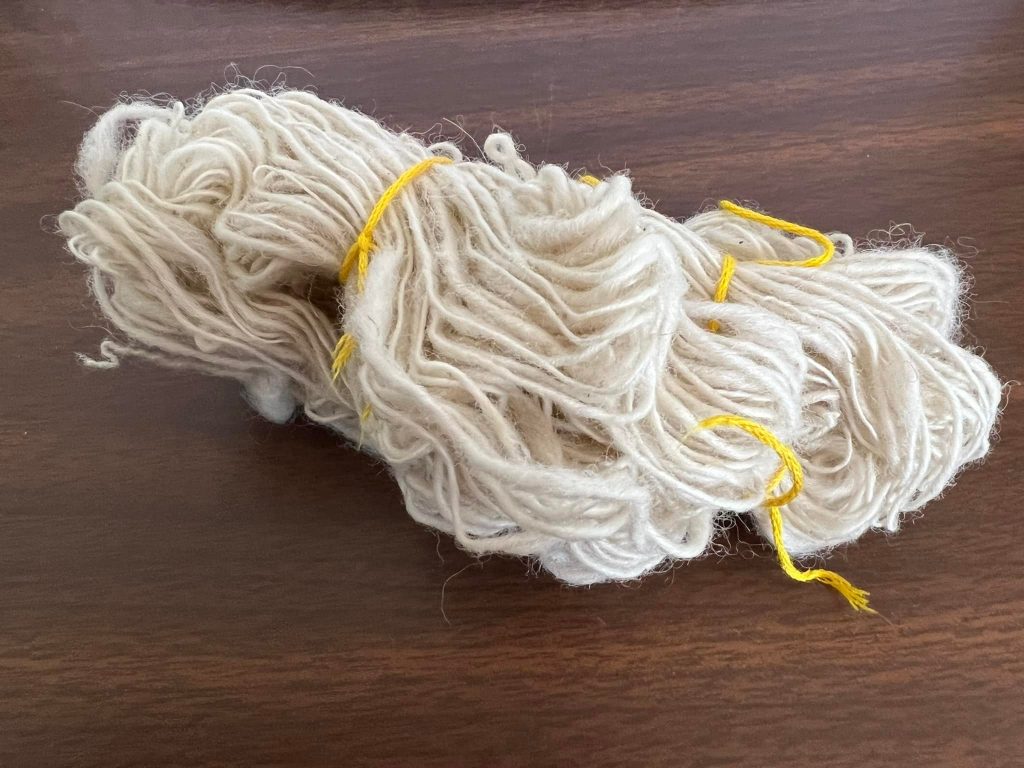Much of my interests and family history with sheep is what guided our video game development for Making Camp Navajo. This new game is set to be bilingual in English and Diné bizaad.
Spinning wool is not easy to learn. It takes some time and some investment to learn. First, I read about how spinning worked and watched a lot of YouTube videos. I had to learn what made spinning easier or more difficult.
The word for sheep wool in Diné bizaad is “dibe’ bighaa’.”You have to build some skills of how wool quality works. Healthy, young sheep yield excellent wool. The breed of the sheep can factor in. Sheep bred for meat, like Suffolk (sheep with black faces and legs), may not always have the best wool quality, but wool sheep, like Merino and Rambouillet, are usually fantastic, because their wool fibers tend to be much finer and can be used for garments, and spun to a finer, loftier yarn weight that can be worn next to skin without being scratchy.
Yarn weight and craft projects are all personal preference, really, and is up to the crafter. Wool can be used for so many things. The wool I didn’t use (like the belly, legs and tail-end wool) was used to fill a couple of potholes in our dirt road. You can technically use as much of the sheep you prefer, as a spinner and crafter. Whatever wool that is not used in spinning can also be used for neat felting projects or as stuffing, mulch, and more.
Spinning and carding wool sounds like a lot of work. It is. My arms and back hurt after scouring all of Fuzzy’s wool last week! My passion outweighs the lengthy process to see new spinning, knitting or weaving projects come to life.
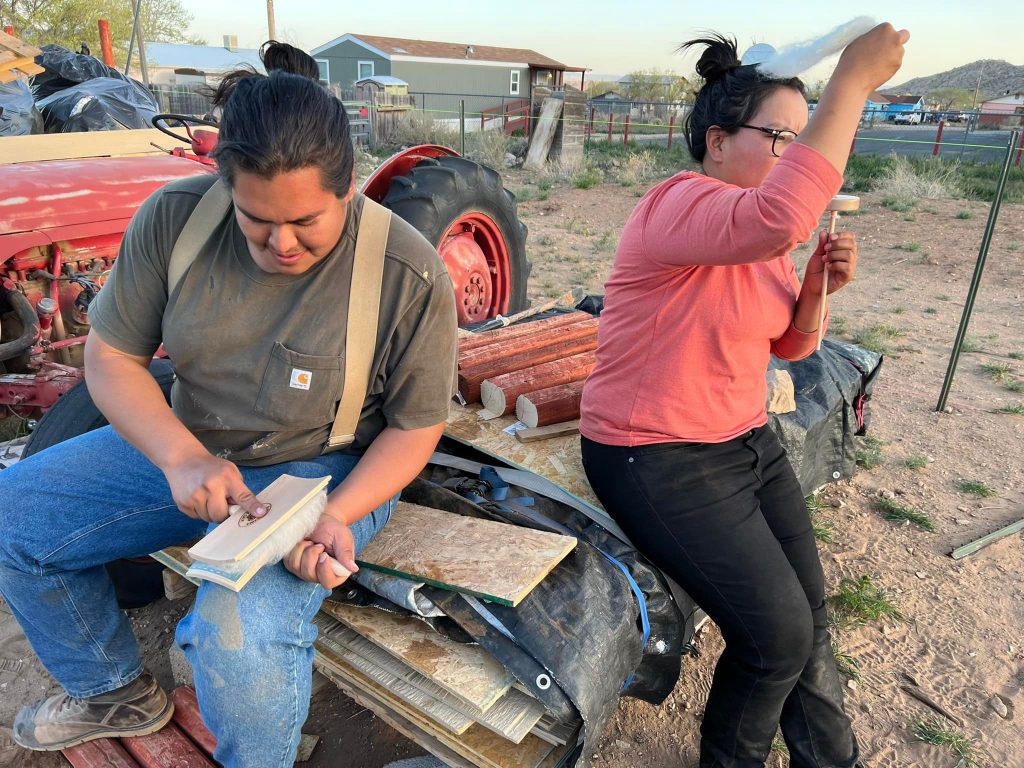
Sheep don’t want to be shorn, but they do get familiar with the process as time goes on. Some sheep who are acclimated to contact can walk up to you, like Fuzzy, but we had to catch his corral mates with a rope because they’re more skittish. The younger ewes and rams who are shorn for the first time sometimes attempt to resist as they are sheared. Sheep can also resist if you as the shearer made a mistake, like nicking them with the shears or maybe the positioning is uncomfortable for them. Sometimes it’s because they ate some grass already and are full (definitely not an ideal shearing time).
Last time, I told you about the scouring. Here’s some carding and spinning. Carding is where the fibers are brushed out and cleaned even further. Some spinners use wool combs (especially great for finer wool) or even hand-cranked drum carders that can clamp to the edge of a table for easier, large volume at-home wool carding. I don’t own a drum carder, but I soon will. I have hand carders for now.
Wefunder Page: https://wefunder.com/7generationgames, Disclosure: bit.ly/38dFXeI
Spun fiber is measure using a “wraps per inch” tool. The tool here is telling me I spun lace-weight yarn (with a drop spindle). From here, I can do more with my yarn, like twist it together to make a plied yarn. I chose to keep it as a single spun yarn in this case. My goal was to go for aran or worsted weight, which is 9-11 wraps per inch, but for some reason, it didn’t go as I had planned. I’m used to spinning thin yarn on a spinning wheel, you see, and it’s currently my instinct to spin thin and then doubly ply for knitting. I’m still learning how to spin different weights of yarn.
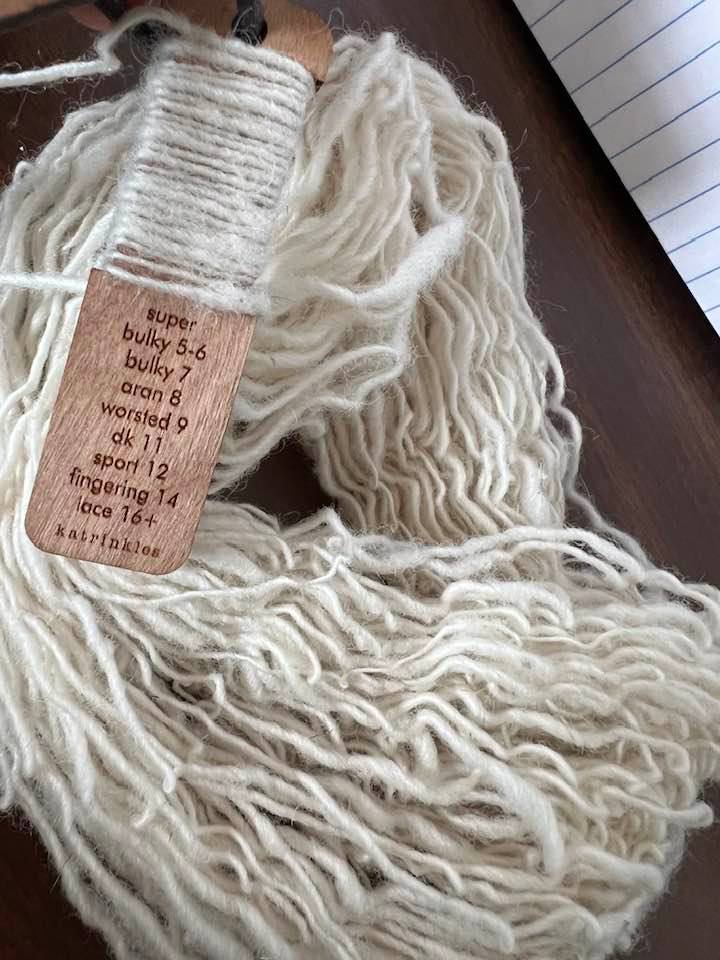
Wool can be dyed before spinning, or after it has been spun. No dyeing for me today. I kept it undyed because my goal was to make a Diné hair tie, or “tsii’ tł’óół.” Generally speaking, “tsii'” means “hair” and “tł’óół” is roughly translated as “rope, cord, or string.” This is specifically used for fixing a traditional Navajo hair knot or bun, known as tsiiyééł.
The hairstyle of the Navajo people is a knot of hair tied with a white, wool hair tie called a tsii’ tł’óół. When I made a tsii’ tł’óół for the first time ten years ago, I was told that it needs to be as long as the wearer’s arm span, with twelve strings. I think this was for saanii and at’eeké (women and girls) so I changed it up a little for this men’s tsii’ tł’óół. My cousin’s hair is thick, but it’s not too long yet.
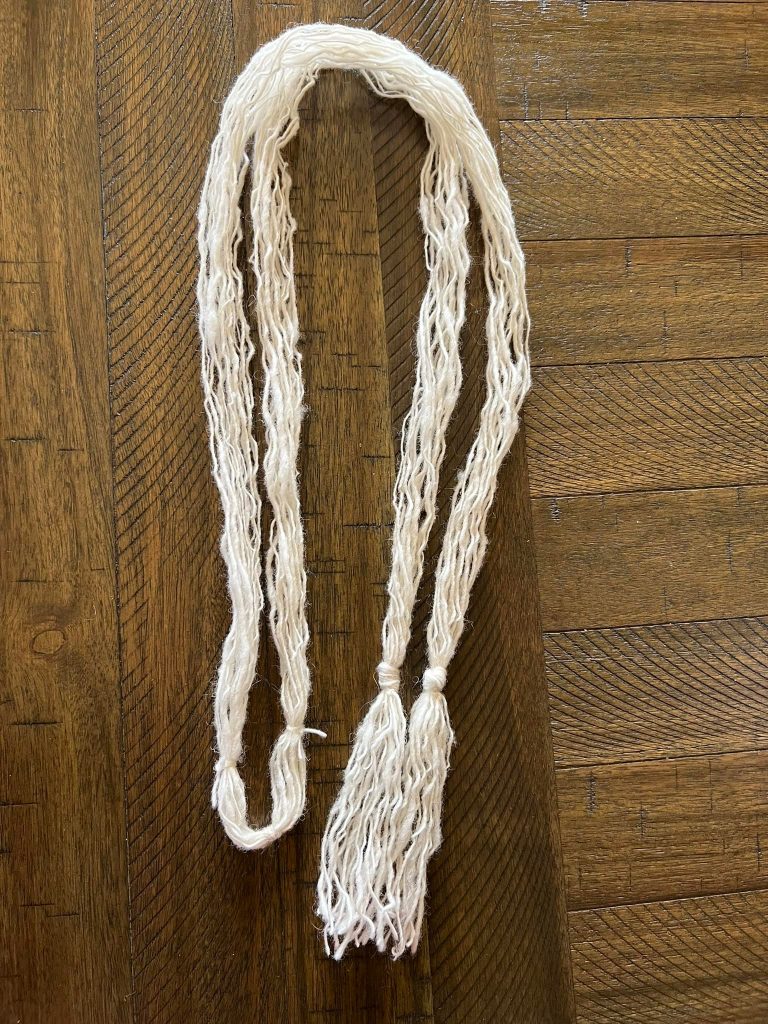
The Diné hair knot might appear the same as worn on men and women, but it differs slightly because Diné men traditionally wear their tsiiyééł low, close to the nape of the neck. The women wear it higher on their heads.
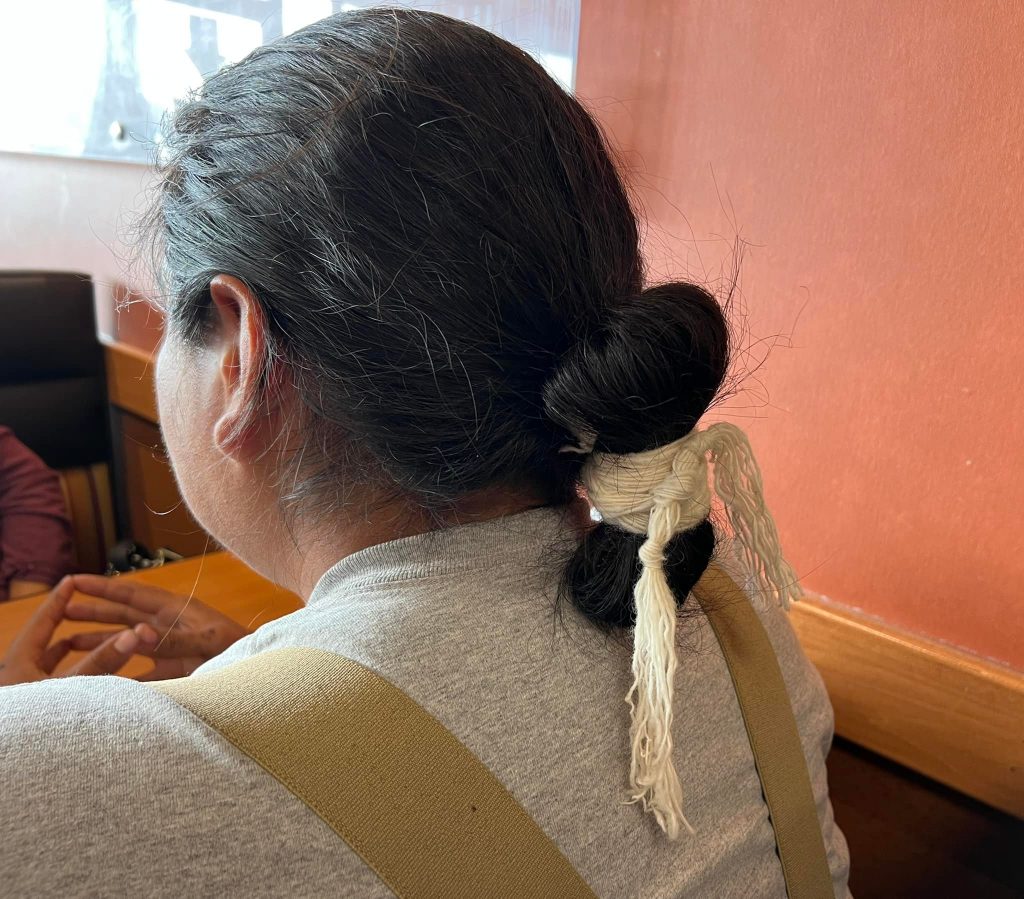
And it’s done. We tied up Tyler’s hair and he got to rock his hair in a traditional way while in Gallup, NM. Next up is his sister’s and our aunt’s, who both put in their requests.
Play Making Camp Navajo!
Making Camp Navajo is the newest 7 Generation Games installment in our Making Camp game series.
It was designed by Diné education consultants for middle school math.
Making Camp Navajo teaches ratios and proportions combined with agriculture and Diné history.
Recommended for Grades 7-8
Math: Ratio and Proportion
History: Navajo
In the latest installment of our Making Camp series, players practice ratio and proportion as it relates to everything from making blue corn mush to planting corn to rug weaving. They’ll also be introduced to Navajo / Diné history.
Customize your virtual hogan, a traditional dwelling, by earning money solving math problems and exploring social studies in this village-building simulation game.
Play the beta version of Making Camp Navajo, AVAILABLE NOW!
🐑FEATURES
📌 Choose from several hands-on activities where problems are randomly generated, so you can play them again and again.
📌 Agriculture is a key part of Diné livelihood. Learn how this pastoral, semi-nomadic tribe herded sheep and used them as a valuable resource in the arid climate of the Southwest. Students will also learn what crops the Diné people planted.
📌 Learn math, history and culture through the lens of Rose Nez, a Diné middle school student who keeps a photo album of her relatives.
📌 All ratios and proportions modules are aligned to Common Core State Standards for 7th and 8th grade, including state and national math standards.
📌 Design your own rug using the rug designer and learn about some historical rug designs.
🧶Customize a virtual hogan–a traditional Diné home–by earning points solving math problems, learn Diné history, and explore rug weaving in this cross-curricular, standards- aligned math game.
Stay tuned for the bilingual version!


